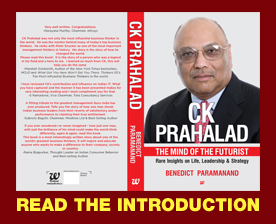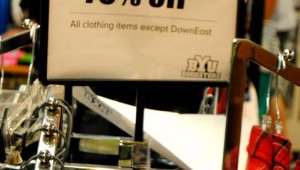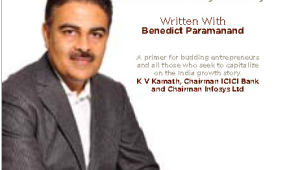Mr. Ratan Tata has given the world of business a magic formula about how to turn around big sick foreign companies. This formula has worked more than once. It’s not a secret formula; it’s there for all to see and it even looks simple.
My inspiration to write this piece is Ray Hutton’s recent book ‘Jewels in the Crown: How Tata of India Transformed Britain’s Jaguar and Land Rover’. This is Tata’s third mega turnaround story after South Korea’s Daewoo Motors’ (Commercial Vehicles Division) in 2004, and Corus Steel. The formula adopted in all the three appear to be the same. Corus Steel, Tata’s biggest acquisition in 2006, is also beginning to make profit after a few glitches especially due to weak global demand. These three were big-ticket acquisitions among more than 30 acquisitions Mr. Ratan Tata made during his tenure as chairman from 1991 to 2013.
Low expectation of the market, and employees initially, because the Tata name was relatively unknown in their countries, helped by not burdening the already fragile companies with unreasonable pressure. With the JLR success, the Tatas have certainly raised the expectation levels sky high. Expectation management may well be a new art the Tatas have to learn, something which Mr. Cyrus Mistry, the new Tata Chairman, would have to work on.
Tata’s turnaround stories are even more impressive because they acquired companies during global and regional economic downturns and when they were turned around, these economies were still in a recovery mode.
It’s possible that setting one’s house in order is easier during difficult times. Access to cheap capital helps in better cost management and vendors too offer competitive rates helping margins. Top talent too is easy to poach. Employees, for whom job security is paramount when their company’s survival is at stake, don’t mind breaking their backs to make their new bosses happy.
Tata’s acquisitions shed inertia and get on the road in quick time. For example, in just two years of acquiring Daewoo Motors’ (Commercial Vehicles Division) in 2004, Tata Daewoo celebrated $100 million in exports to 40 countries, even receiving an award from the South Korean government. This figure doubled in 2008. JLR moved from red to black zone in 2011, all in three years when it was acquired by the Tatas in 2008. Remember, Europe is still in a slow down mode and the US is just recovering.
Dr. Oh-Hwa-seok, CEO of India Fortune, part of the Indian Economy Research Institute in Seoul, captures the Tata Way lucidly in an article in Asia Pacific Business & Technology, January 2010 issue: “Tata Motors acquired the entire equity of Tata Daewoo, but it never behaved as if it were an occupation force. It appointed a native Korean as CEO (who was voted best Korean CEO in 2007) and it respected the Korean business style and corporate culture, while slowly integrating its strength of trust and ethical management into the whole organization.”
Answering a scribe’s question in one of the auto shows in Europe, Mr. Tata said: “We are very conscious that the brands belong to Britain (Jaguar Land Rover) and they will continue to be British. Who owns them is not as material as the brands themselves, the enterprise and the people. In all the companies we acquire, we have to be satisfied that they share the same value systems and ethical practices and that we gel on a human level.”
Going for broke
It’s an insult to say the Tatas acquisitions were just bold – they were unimaginable by an Indian company. Having risked big money already, it is even more risky to adopt a go-for-broke strategy – if they had bombed, the whole investment could have gone up in smoke. They didn’t.
The new truck model by Tata Daewoo sold like hotcakes. It took only 20 months for Tata Daewoo to occupy a 35 percent share in the medium-sized truck market in South Korea. Not closing the third plant of JLR, despite strong suggestions to cut costs to stay viable during slow down, helped in meeting growing demand for newer models of Land Rover in 2011-12. Indeed, big bets get you big rewards!
From now, analysts and everyone else, will no longer be “stunned” when the Tatas, or an Indian company, acquire a big global brand. Tatas have also shown that small fish can eat big fish, not necessarily the other way around. The Tatas have shown, even with Tetley Tea in 2000, that the small fish need not really eat its prey – it can get the big fish to shed flab to make it fighting fit and teach some new tricks so that it competes with the other big fish in the global market.












Recent Comments